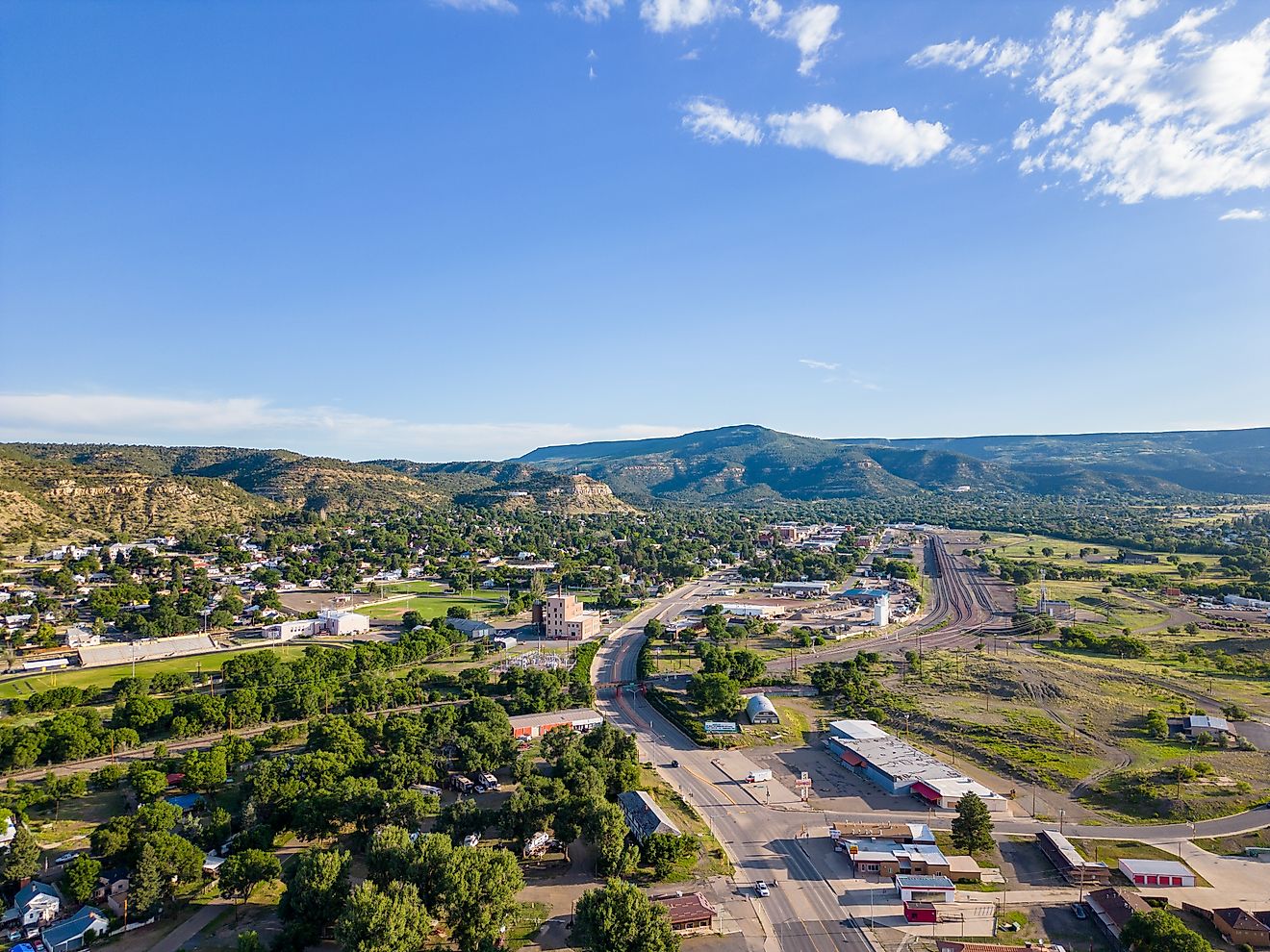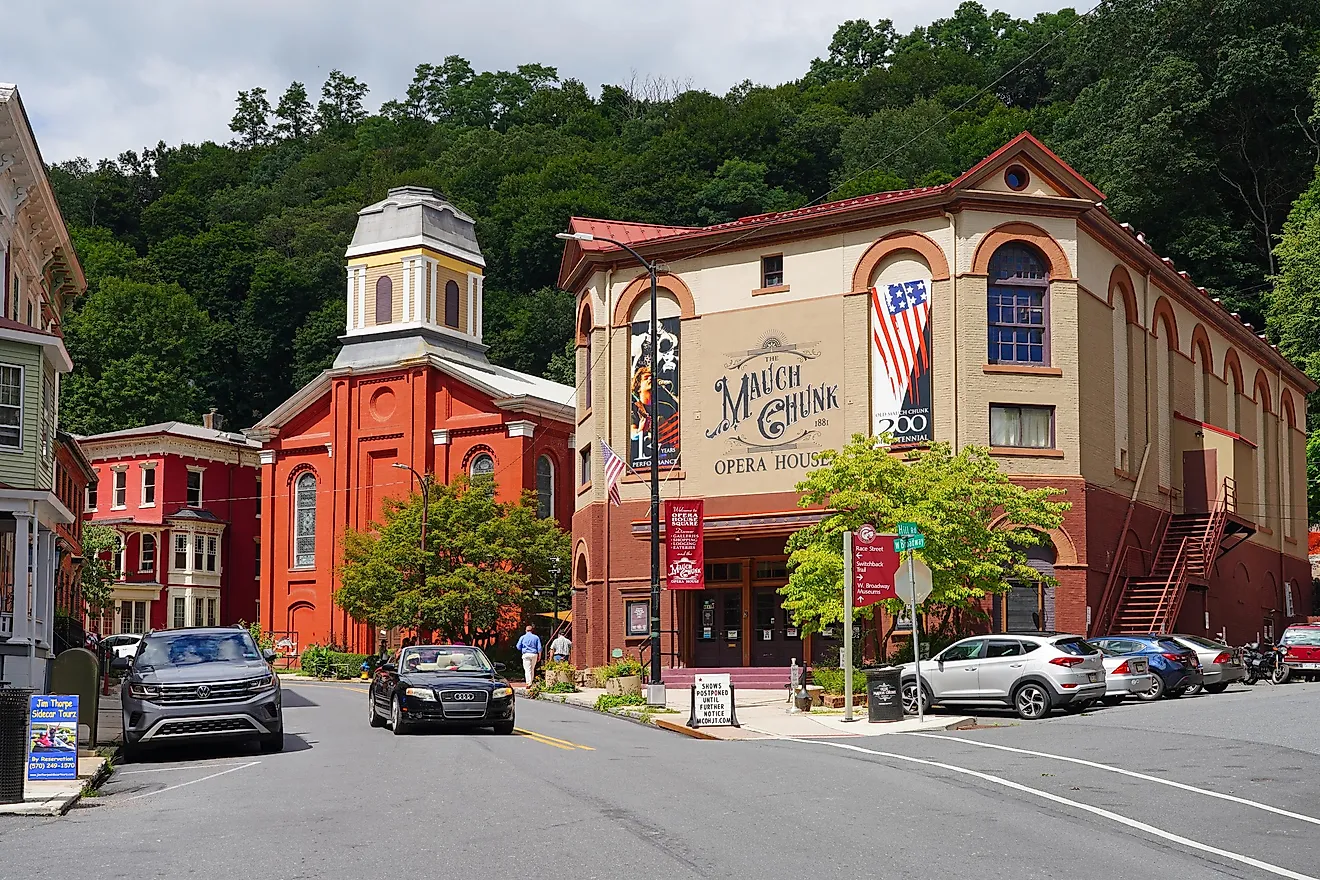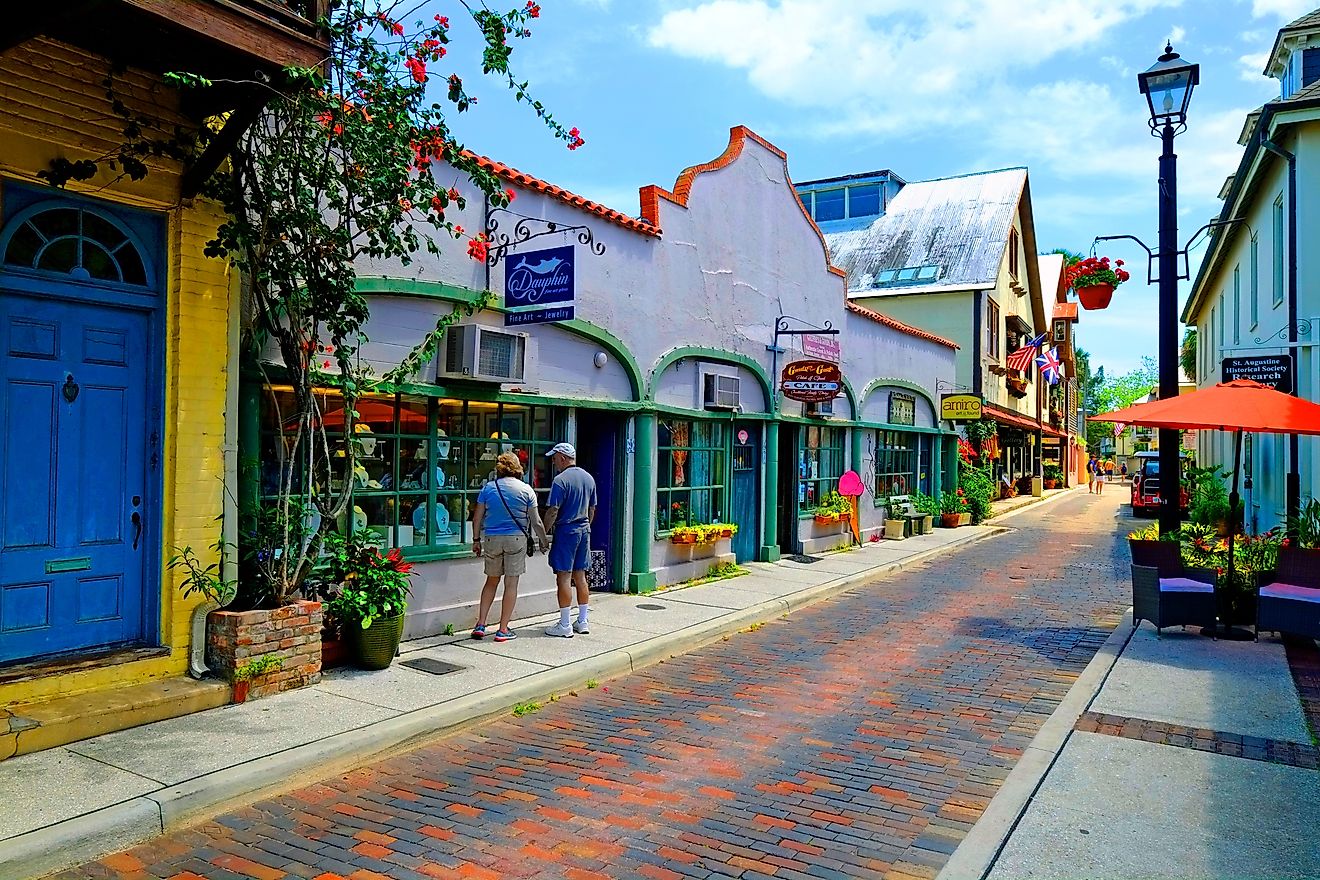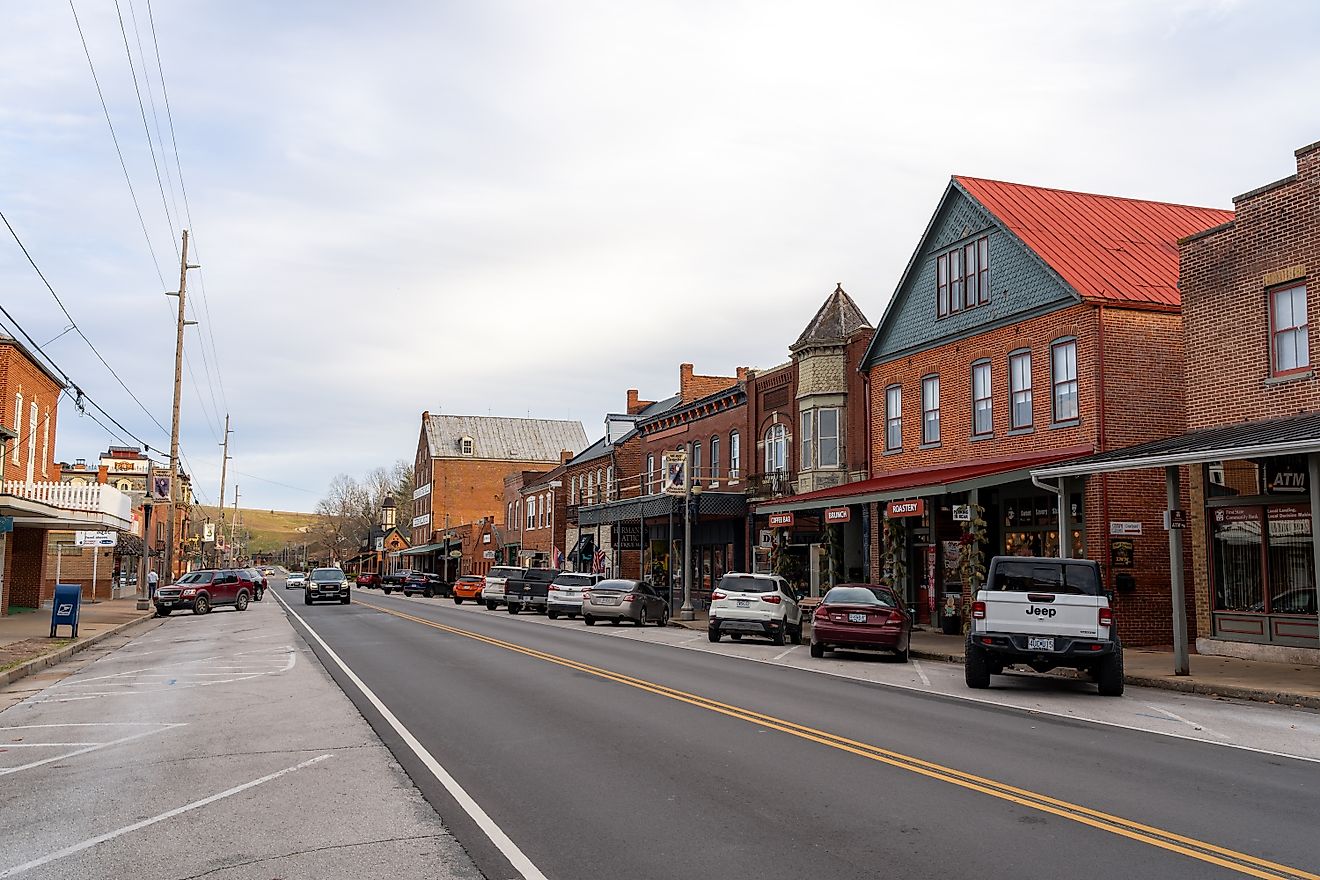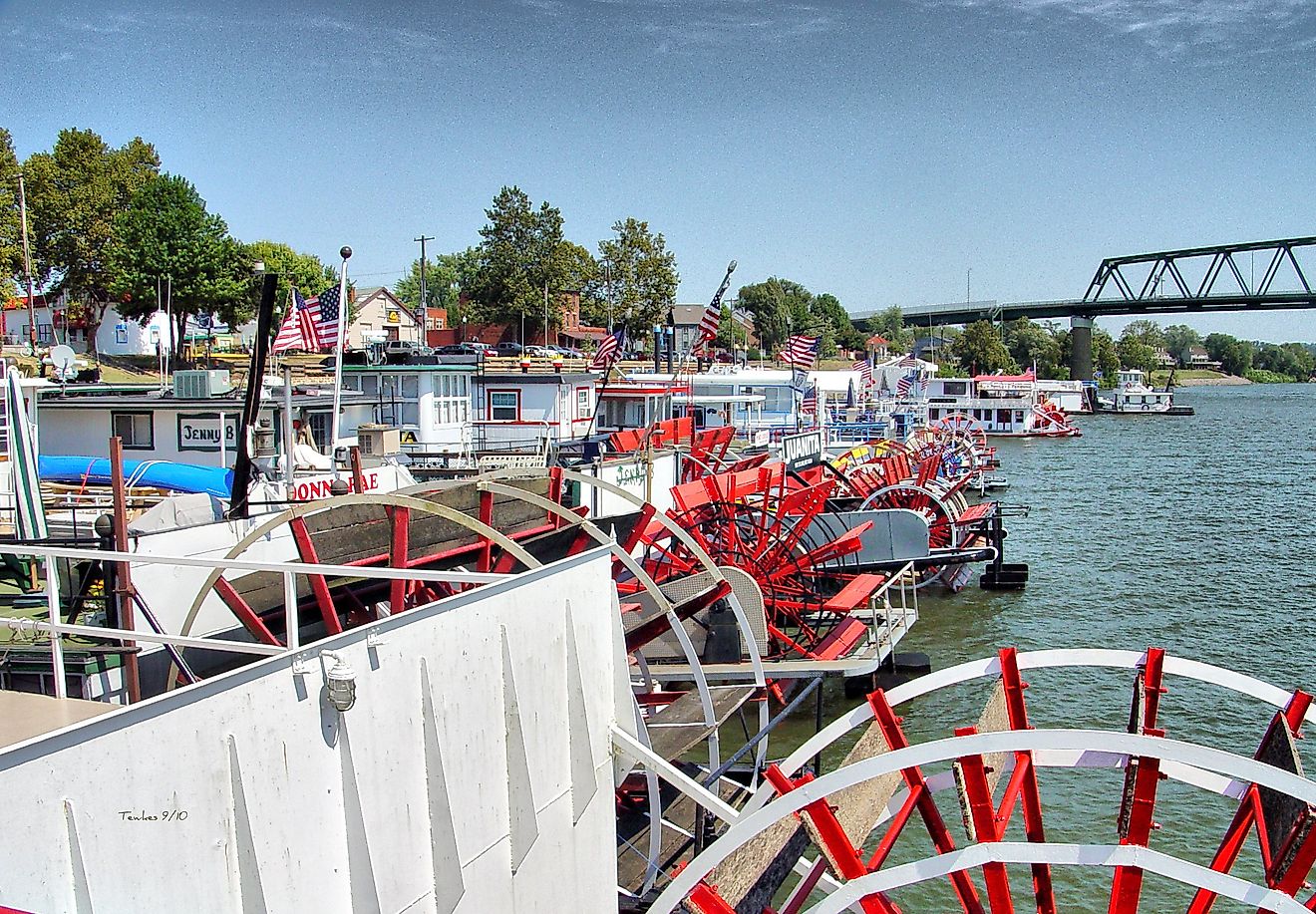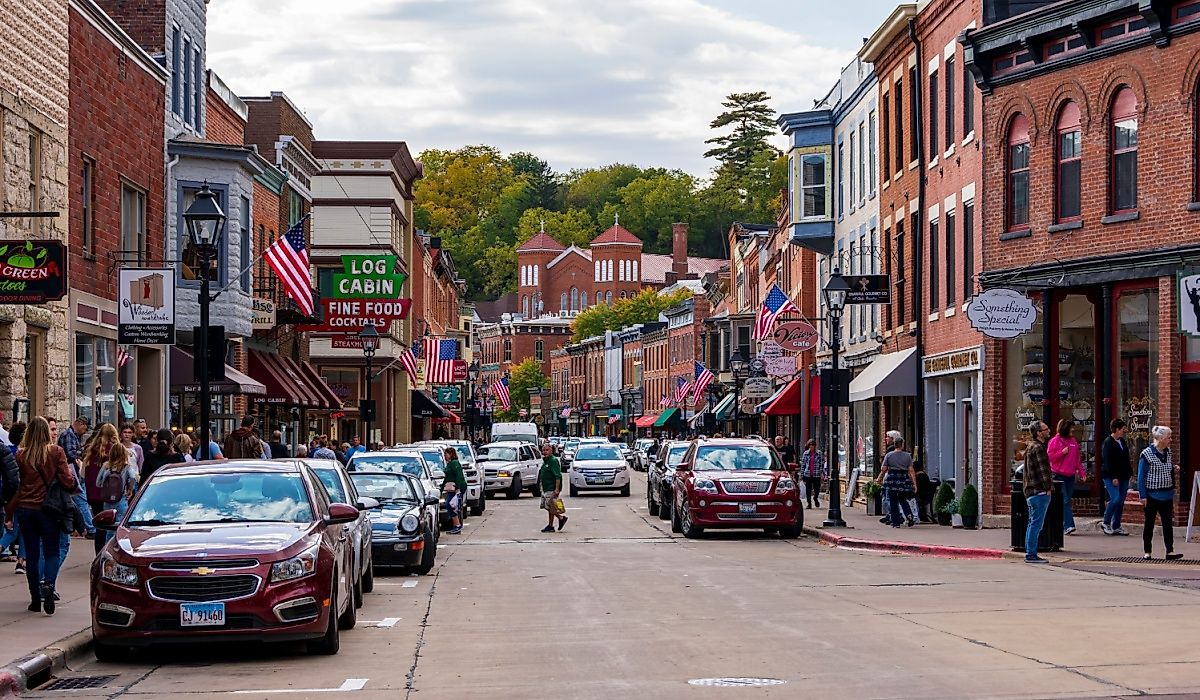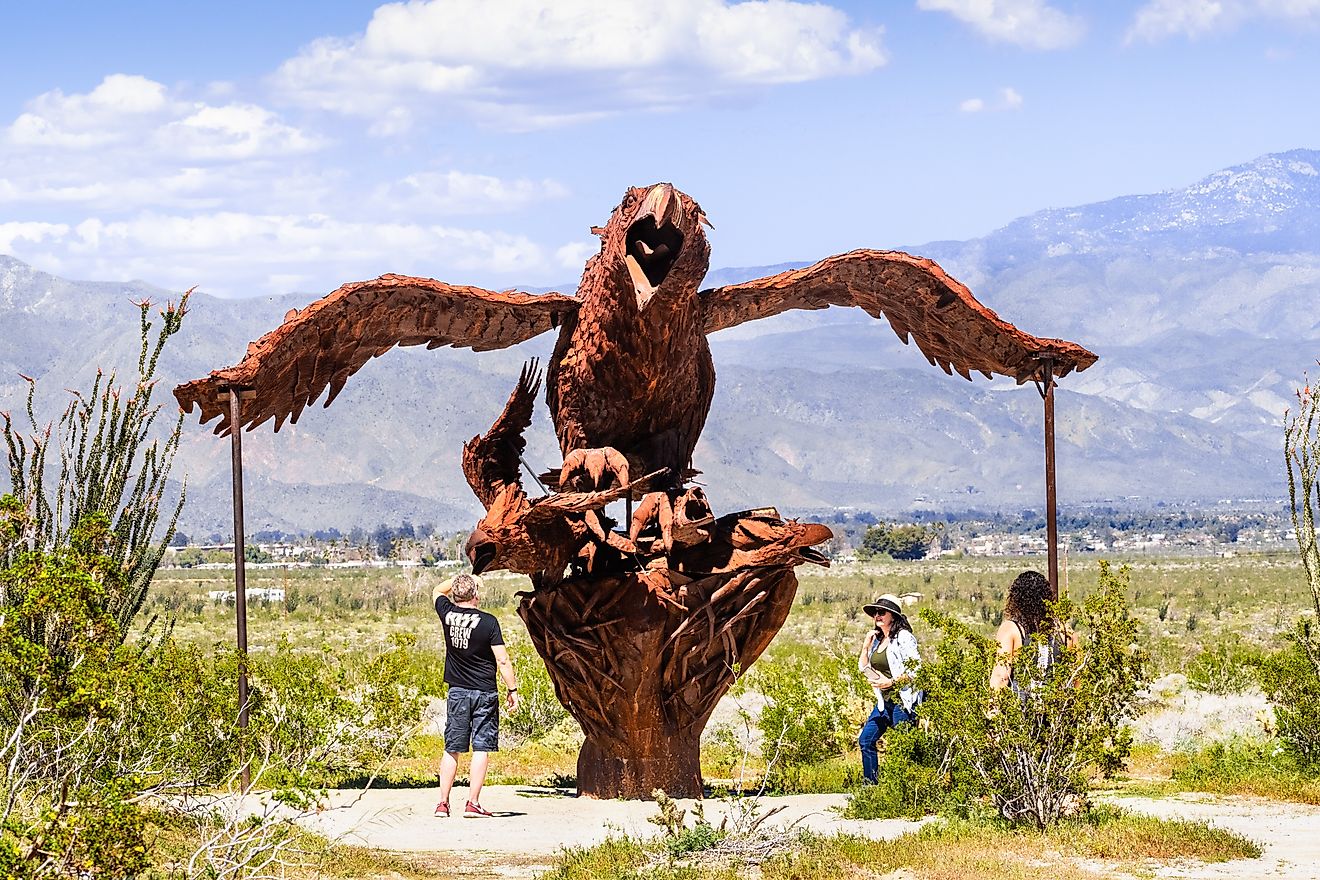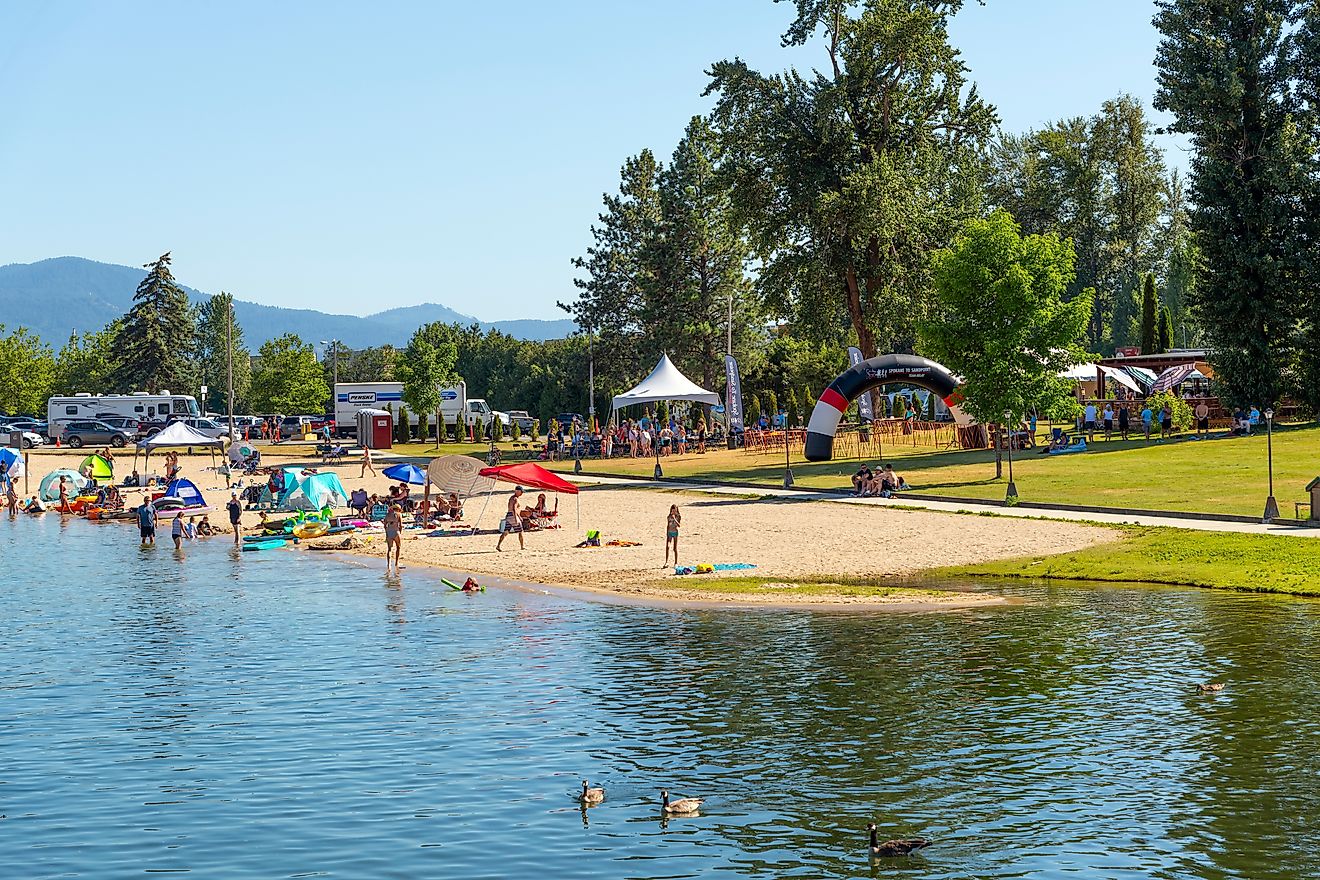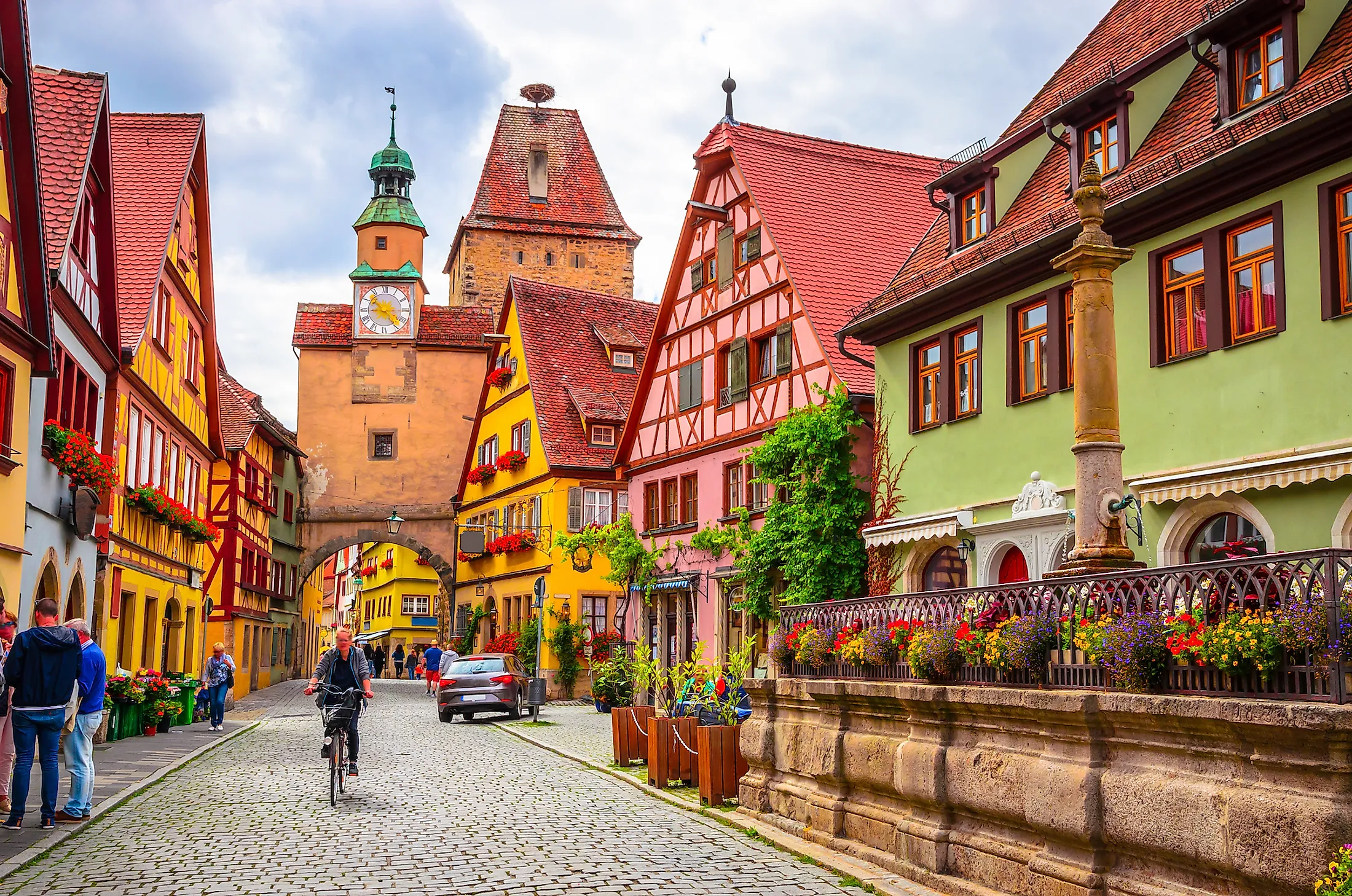
10 Best Hidden Gems In Europe
There are many gems in Europe, some unheard of, while others overlooked when scrounging for the next outing from one's country. This list offers a one-of-a kind collection that will not cost more than visiting Paris, but give bragging rights of likely being somewhere only few have been.
Bamberg, Bavaria, Germany
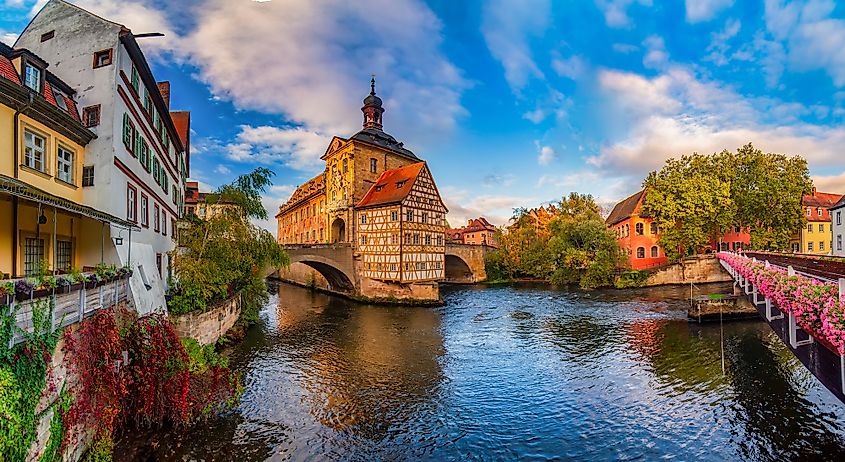
A forty-minute car or train trip from Nuremberg will take one to this charming town, chosen democratically by the citizens as the town best suited for life in Germany, which joined Bavaria in 1802. With a large market for gardening and brewing today, Bamberg was untouched by the attacks of the Second World War, lacking prominent industry, saving the beautiful medieval churches and baroque architecture, sitting on the seven hills, from the bombings. Among the Baroque patricians’ sits the St. Michael’s Church (declared sacred in 1015), the St. Jacob’s Church from the XII century, the St. Martin’s (1685–93), the rebuilt old town hall of 1453, and the Altenburg, the chapel of an ancient fortress. It is no surprise that the town's symphony orchestra is of international reputation, with the poet and composer E.T.A. Hoffmann having lived in the house opposite of the Civic Theatre.
In this UNESCO World Heritage site, designated for being the centre of the 18th century Enlightenment in southern Germany, one can stroll on the grounds of the Benedectine Abbey; it was also here that, in 1459 the first book got printed in Germany. Sitting on the canalized Regnitz River joining with the Main River above Nuremberg, the rich history includes a story of a royal family, the Babenbergs, first mentioned in 902 living in their ancestral castle. One of the most notable sites is the imperial cathedral, which served its purpose from 1004 to 1237, with Veit Stoss-carved wooden altar, important statues, as well as the tombs of Henry II, his wife, Cunegund, and Pope Clement the Second.
Ilha das Flores, The Azores, Portugal
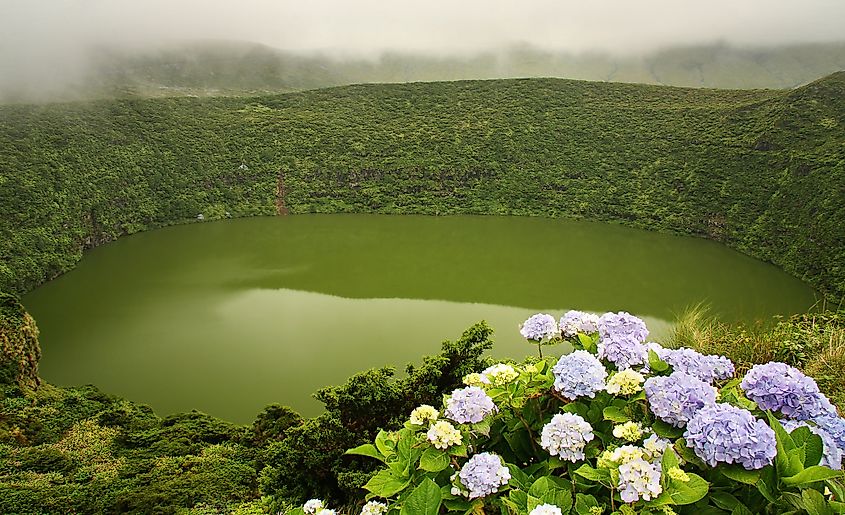
Part of the Santa Cruz group together with the Ilha do Corvo, the Flores Island offers the natural pools of Santa Cruz, the Faja Grande and Lajes das Flores beaches, as well as the Poco de Bacalhau and Ribeira Grande waterfalls to swim in the feet for optimal water fun and relaxation. Sitting in the very western Portuguese Azores archipelago, it is a 55 sq. mi (142 sq. km) volcanic island, while its centrally-located Morro Grande mount is the highest peak at 3,087 feet (941 m. It likely gets its name for the lushly-vegetated crater lakes, which are ample with fish. The economy of Flores Island is reliant upon its cattle for the dairy industry.
With two autonomous regions in Portugal, Madeira and The Azores Island, the latter, is a nine-island archipelago in the North Atlantic Ocean, 1,360 km west of the mainland. It is described in the Forbes magazine as the "perfect destination to reconnect with nature", as well as granted a European Destination of Excellence reward, for offering unforgettable travel opportunities, respectful of the environment. Sure enough, hiking, flora and fauna sightseeing and marine life-watching, together with local products tasting, including the juicy fruits grown in Portugal, comprises a time of a life. Also being the most northerly-one, the Island of Flores is perfect for solitude within a natural environment, being less visited for its relative remoteness.
Kazbek, Georgia
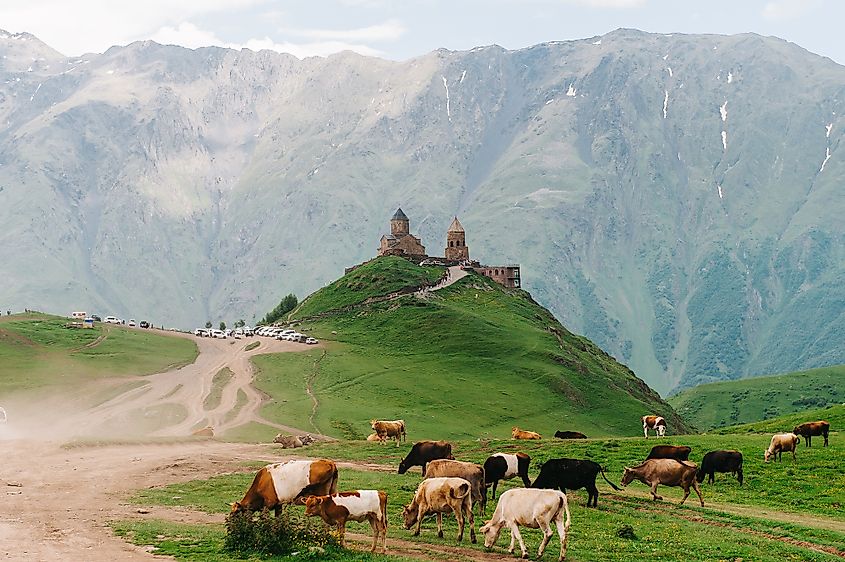
Located in the eastern range of the Central Caucasus at the Russia-Georgia border, and known as Mount Mqinvartsveri by the locals, Mount Kazbek is one of Georgia's highest peaks. Sitting in the north at 16,512 feet (5,033 metres), just as Elbrus, it used to be an active volcano, of double conical shape and formed of 1,000 feet (300 metres) thick lava flows, while its lower elevations are alpine meadows. At 3,800 m there is a cave in the upper part of an 80 m rock, with an ancient monastery Betlemi (Bethlehem) accessed by monks with a long iron chain at its time. It was mentioned in the poems of the celebrated Russian authors Aleksandr Pushkin and Mikhail Lermontov's "Hero of our Time”. Featuring distinctive remains of an ancient gigantic crater on its south facade, Kazbek is one the world's most appreciated mountains offering spectacular views upon ascent, frequented more commonly than other peaks in the Caucasus, while its icefields also give rise to the headstreams of the Terek River.
There is a convenient access from Tbilisi or from the check point with Russia (Verkhniy Lars), or one can catch a taxi from Vladikavkaz to Kazbegi village (150km). The village is 1.5-2 away from the old monastery near the foot, Saint Trinity Sameba, built in XIV century, to easily access the The Bethlemi Hut at the foot, a former meteostation now serving as a gas stop and a convenience shop. With the mostly glacier hike and only 100 m of easy ice climbing at less than 40 degrees, at the couloir below the summit, the only challenge is the amount of ground one must cover, making the trek up and down likely to last for days. The climb itself is relatively simple.
Leiden, Netherlands
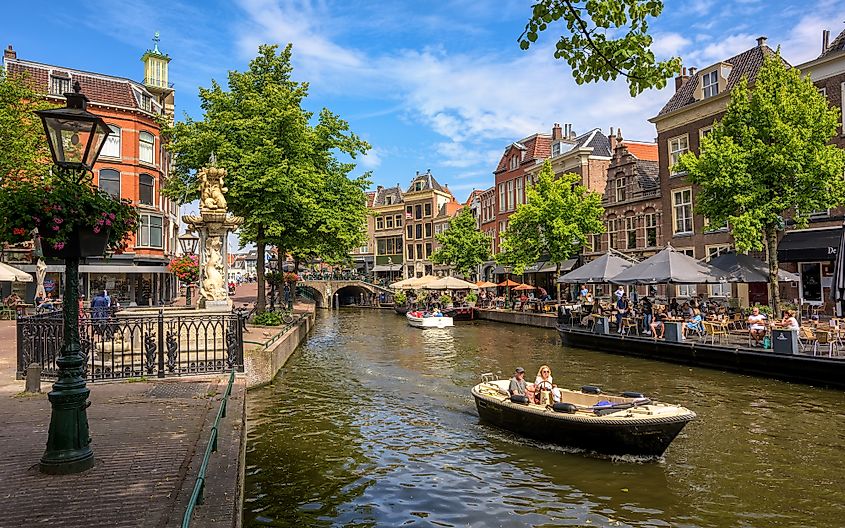
Rembrandt’s birthplace and the university where Einstein taught, Leiden consists of many canals and waterways, inclusive with canal side cafés for a mid-day pick-me-up, beer or wine, with Vlot Grand cafe sitting right on the water. Wandering the historic streets with a modern twist over the intricate bridges among the notable 17th century architecture is the best way to soak up the Dutch vibe, complete with the windmills. Already being the heart of tulip country featuring the Keukenhof gardens, offering the city views from the Molen De Valk museum mansard, being the setting of Pilgrims raising money to commence their Mayflower journey to the New World, but it is also the birthplace of famous Rembrandt, Jan van Goyen, Metsu, and Dou, making it the centre of the Dutch artistic Renaissance.
Lying at the confluence of the Oude Rijn and Nieuwe Rijn (Old Rhine and New Rhine) rivers, 10 miles (16 km) northeast of The Hague and 5 miles (8 km) inland from the North Sea, Leiden was first mentioned in 922 and grew around the 12th-century castle, Burcht. In the 14th century, the influx of weavers from Ypres gave start to the city’s textile industry, while, in 1581, the Elzevir family from Leuven established their press. The Spanish siege from May to October 1574, was relieved by cutting dikes and flooding the countryside for the Dutch ships to deliver provisions to the citizens, for the bravery of which the University of Leiden was founded in 1575 by William I (the Silent), prince of Orange, with renowned Dutch Reformed theology, science and medicine in the 17th and 18th centuries, scholars, and affiliated institutions.
Menenham Village, Kerlouan - Brittany, France
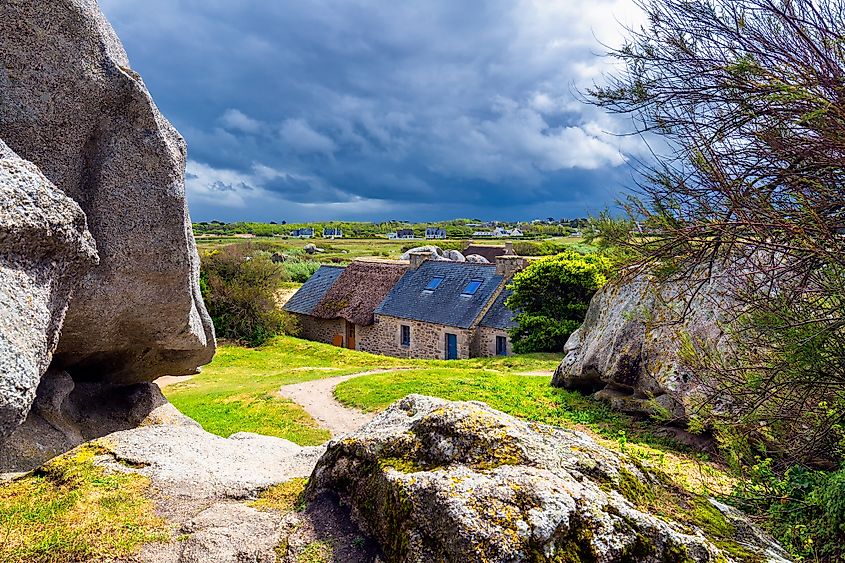
This is a coastal hamlet sitting in the state of Finistere, on the Brittany peninsula in France built to monitor the coast, and disguised between two rocks with many boulders dramatically littering the Kerlouan seaside. Recently renovated, it displays how life was for sailors in the 18th century. Nevertheless people flee to the location for the beauty of the region including the remote setting of lush landscapes bordered by turquoise waters of the mer d’iroise, juxtaposed with the wild side of the Brittany coast. East and west of the location are rock-strewn beaches, suitable for a dip and a comfortable company picnic.
The stone-roofed house was built in the17th-century as a coastguard’s cottage to spy on the sea, during the war period between England and France. Although built for farmers, the village, built afterwards, was neglected until recently. The picturesque houses within sandy grasslands, is where people can view films of the past, taste delicacies and try their hand in local craft. Still, the most popular activity is climbing the boulders to sense the vastness of the sea in front, with just Ile Vierge lighthouse visible far away on a clear day. There is also the rocky Chapelle Pol ("chapel") between Meneham and Brignogan, the Menhir Men Marz, a monumental Neolithic structure, and the Pontusval lighthouse surrounded by forbidden rocks.
Monet's Garden, France
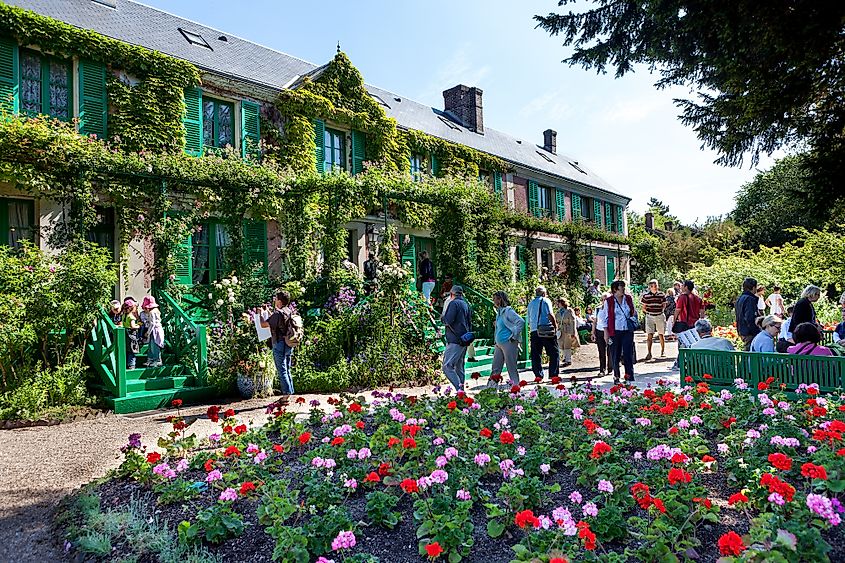
The Giverny Gardens, a place of magnificent landscape and sublimit where Claude Monet resided upon leaving Paris for Normandy, inspired him to create one of his greatest works, "Les Nymphéas". After seven years of residency he finally acquired this house, an hour-drive from north-west of the capital. The stunning flower garden in front welcomed Monet in, while the famous water gardens were created ten years later when he bought the vast property across the road. Living in Giverny from 1883 until his death in 1926 his other paintings of the water lilies and Japanese bridge were also inspired by these gardens, visited annually by 500,000 people.
His garden paintings were made especially famous by the colourful blaze of blooming alliums, peonies, irises, wallflowers and early roses, replaced by dahlias, asters, rudbekia flowers and a carpet of nasturtiums in his 'Grand Alléé or the central alley painting in autumn. Even amateur eyes can comprehend that the planting was strategic, while the replica of a Japanese bridge and installed ponds with water lilies surrounded by weeping willows, cherry trees, rhododendrons and azaleas, ferns and irises were in his collections. Between July and August one can see the lilies upon walking on the bridge of his gardens, while his simple house features a colourful exterior with welcoming vibe illuminating warmth from within.
Odessa, Ukraine
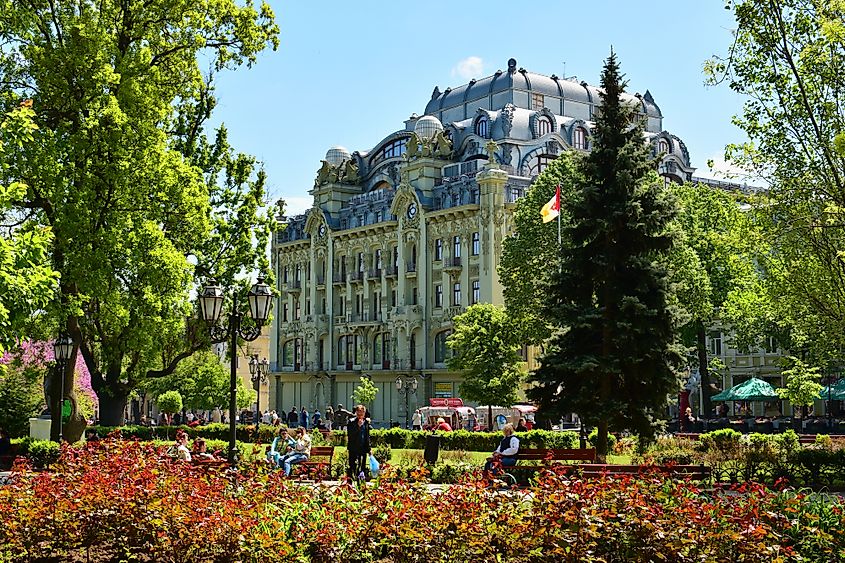
Sitting on the western shore of Ukraine's Black Sea, this major port city, where even the winter's ice does not interfere with shipping is an obscure gem of Europe. It contains the famous Potemkin Stairs constructed in 1837-42, featured in the The Battleship Potempkin film (1925) with the scene of the baby carriage falling down all 192 steps. One of the finest in Europe, The Grand Odessa Opera House, built in 1884–87, is not far. Also equipped with convenient rail and bus links, one can reach the 25 miles (40 kilometers) of sandy beaches galore with many clubs along the shore from outside of Ukraine as from within. Ibiza and Itaka night clubs on the Arcadia located on the eastern side when facing the sea are overcrowded and overpriced during the summer months, but concerts by most loved European artists make it well worth attending.
The city received its name in 1795 from an ancient Greek colony, Odessos that occupied the area prior to it being called Khadzhibey, with a fortress, in 14th century. Turkey owned the site in 1764, while, in 1791, the region was Russia’s that began construction of their naval base with the rapid growth and foreign trade expansion in the 19th century, and with the arrival of the railway in 1866. It was the center of the unsuccessful 1905 revolution, the set for civilian massacre after warship Potemkin mutiny, occupied by the Germans with almost 100,000 Jews extinguished, but Odessa, despite occurring damages, rebuilt itself. The most known Deribasivska Street is the heart of Odessa of endless restaurants, fast food and boutiques, where people hang through the night.
Rothenburg ob der Tauber, Bavaria, Germany
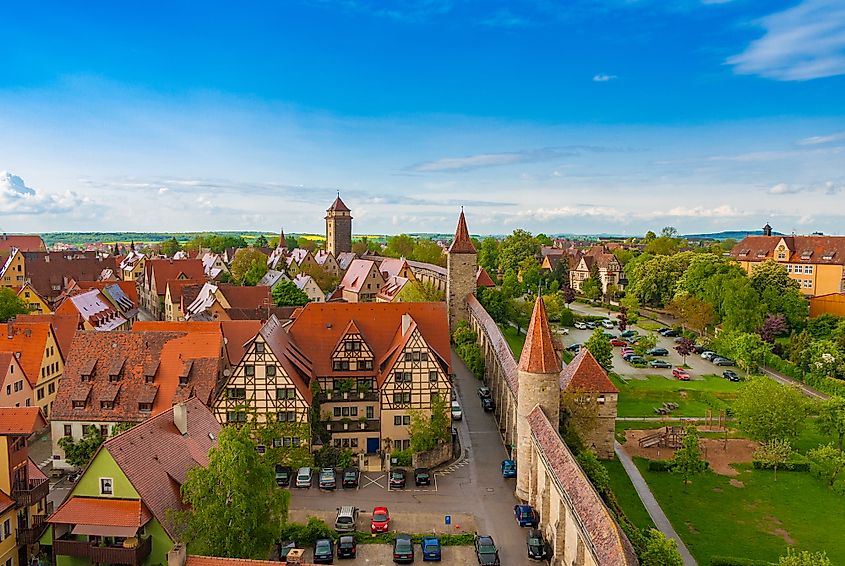
Located in Bavaria in south-central Germany, this postcard city provides a true fairy-tale experience, as the essence of Germany and containing everything "the most", beautiful, authentic, traditional, colourful, and charming for tourists and living conditions for the residents. Lying in the deep valley of the Tauber River, with the scenic “romantic route” between Würzburg and the Bavarian Alps, in the vicinity, it offers opportunities for strolling on the picture-perfect streets, visiting some of the numerous cafes for a sausage or a schnitzel meal followed by a cup of traditional European coffee with a whipped cream-topped strudel or the famous Bavarian beer. December and winter holidays offer the most magical site, getting awarded as one of the most beautiful Christmas markets in Europe.
Developed around the Hohenstaufen fortress, it was a free imperial city from 1274 to 1803. Under the burgomaster Heinrich Toppler from 1373 to 1408 it was most powerful and successful, losing its zenith after the Thirty Years’ War, upon getting besieged and captured in 1631 by the Catholic League forces. As commemorated in the collection of the Imperial City Museum, as well as every week in the play Der Meistertrunk (The Master Gulp), the tale goes that the city was spared after its citizen completed an enemy's dare to drink more than three quarts of wine in a single gulp. As one of the best-preserved medieval cities in Germany, it is encircled by many-towered walls guarding Gothic and Renaissance city hall with a Baroque arcade.
Sistelo, Portugal
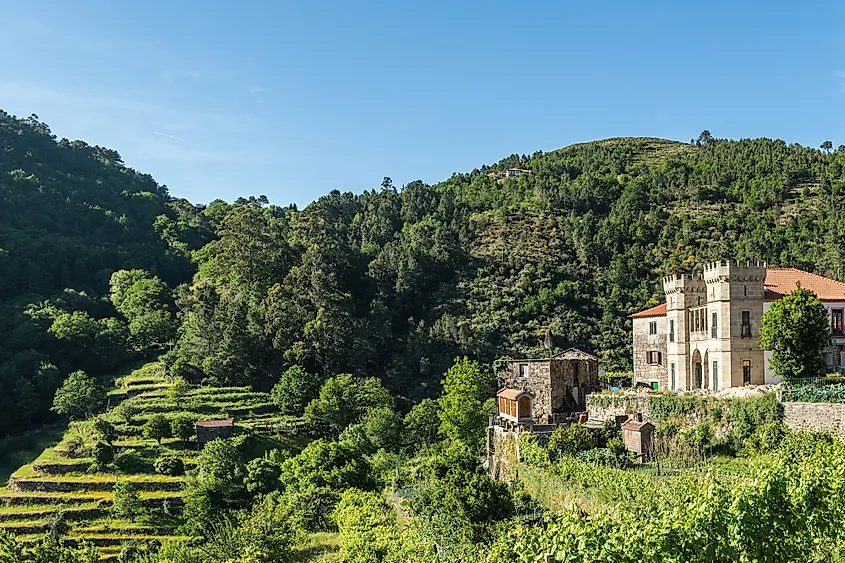
A 90-minute journey by car from Porto, Sistelo is a gem with only 300 inhabitants. Sometimes called "The little Portuguese Tibet”, it is considered one of the seven Portugal’s wonders with its green terraces shaped by human hands. Its plateaus are used for animal farming as well as are highly arable, producing grains, such as corn, stored in raised-from-the-ground granaries called "Espigueiros", to protect the precious supply from rodents. This small village is major producer of corn flour that is ground within the mills along the river.
Sistelo offers a picturesque escape, where the most active can hike in natural setting stopping at the "Cha da Armada" viewpoint or walking the M1289 route to Padrao and Porta Cova to obtain the best views of this neat, hard-working village, in one of the country’s most scenic places. There is also the “Brandas de Sistelo” trail, with 11-kilometer walking opportunity in fresh air with exceptional views that begins in the village and showcases some of the most beautiful sights the region’s nature has to offer. Officially named national monuments and cultural landscapes of Portugal, along with the must-visit Sistelo Castle, displaying the cultural heritage of the region, Sistelo has been protected by law.
Trans-Siberian Railway Journey, Russia
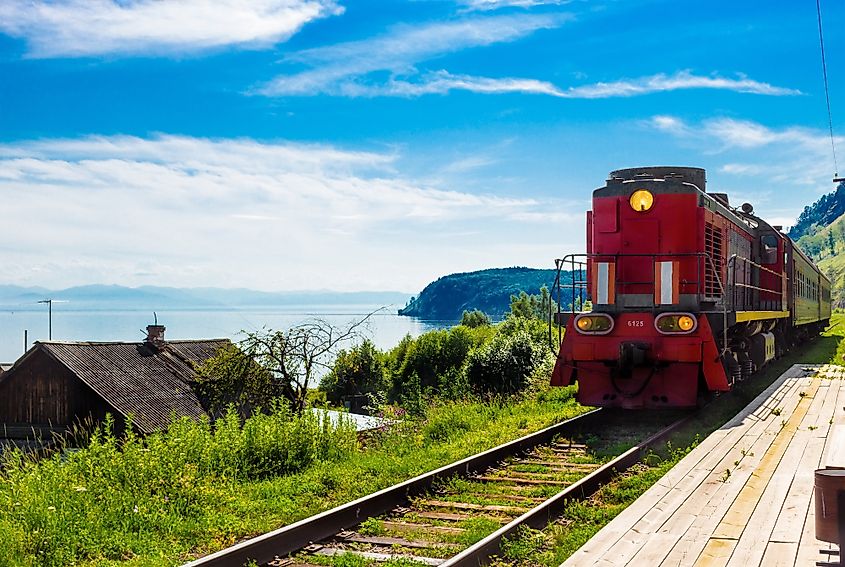
The last gem is unique, in that it offers the opportunity to see the vastness of the world's largest country, visiting some of its treasured cities, while being in an atmospheric environment throughout, a three-in-one experience to cherish forever. The journey on one of Russia's famed trains, on the Trans-Siberian Railway, starts from Moscow, with three stop-overs in the cities of Irkutsk, Ulan-Ude, and the deepest lake in the world, Baikal, which holds 20% of the world's freshwater supply, in between. Choosing a class for the train ride, one may want to consider riding first- for the longer legs of the journey, or second-class, which offers most of the comforts, but cheaper, while opting-out for the "economy" third-class during the shorter ride, where the experience of intermingling with the mostly-Russian crowd will leave lasting impressions.
Constructed in the late 19th century and completed in the turn of the 20th century the railway runs along Siberia between Moscow and the naval port of Vladivostok, with Ural Mountains to the West and the Pacific Ocean in the East. There are also off-shoots to China and Mongolia. Irkutsk, on one side of the lake is a mid-sized city, greatly contrasting the epic vibe of the capital. Upon scavenging the shores of Lake Baikal, one will get a chance to further appreciate its vastness through the onward journey to Ulan-Ude, which continues for 6 hours, almost entirely along the lake. Ulan-Ude welcomes one with a Russian-Mongolian mix, in culture, food, traditions, and architecture, such as the city's monastery. The main Arbat Street offers refreshing fountains and local cuisine cafes for passing time. There is also a monument of Lenin's head, a biggest of its kind in the world, located in this city close to Asia.
These gems offer unique perspectives of human and nature’s creativity on planet Earth. Being less visited than the great epicentres that are more written about, known and explored, one can also self-reflect by choosing a gem, get inspired and definitely have tales to tell back home.
